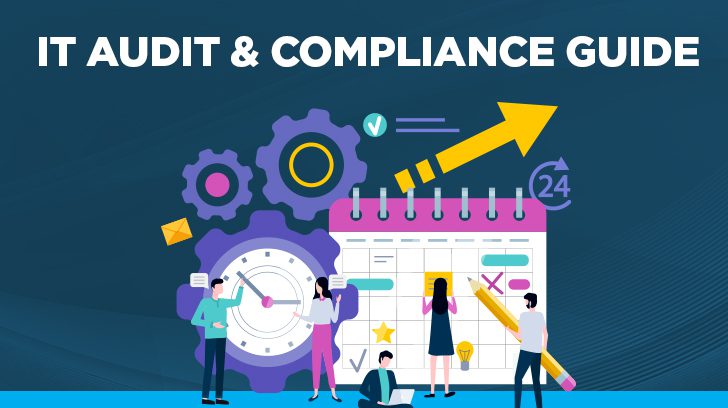When your business runs on technology – and let’s face it, whose doesn’t these days? – you’re not just relying on servers and software. You’re betting your reputation, your client trust, and often your entire operational capacity on systems you can’t see and barely touch. That’s where Information Technology (IT) audits step in. They’re not just about checking boxes – they’re about uncovering hidden risks, strengthening your defenses, and making sure your tech backbone is built to last.
Let’s take a closer look at how IT audits work, what to expect, and why they matter more than ever.
What Is an IT Audit & Why Does It Matter?
Think of an IT audit as a health check-up for your company’s digital systems. It’s a thorough evaluation of your tech infrastructure, from hardware and software to policies, procedures, and people. The goal? To assess how secure, efficient, and compliant your systems really are.
But here’s the twist: IT audits aren’t just about finding flaws. They shine a light on what’s working, what could be better, and what needs to change to keep your organization protected and aligned with today’s security and compliance expectations.
The primary objective is to evaluate the effectiveness of internal controls and identify any weaknesses or vulnerabilities that could compromise the confidentiality, integrity, or availability of information.
IT Audit vs. Traditional Audit: What’s the Difference?
While a traditional audit digs into your financials, an IT audit looks under the hood of your technology environment. It focuses on risks that are less visible on a balance sheet – things like outdated firewalls, sloppy access controls, or overlooked vulnerabilities in your cloud infrastructure.
Whereas financial audits are numbers-driven, IT audits are systems-driven. They’re both essential, but they operate in very different lanes.

Two Core Types of IT Audits: Compliance & Controls
Most IT audits fall into one of two camps.
IT Compliance Audits
These audits answer a simple question: Are you playing by the rules? Whether it’s HIPAA, SOC 2, GDPR, or ISO/IEC 27001, these evaluations check whether your systems meet regulatory and industry-specific standards. A SOC 1 audit, for instance, looks at both business process and IT controls, while a SOC 2 audit dives deeper into your info security practices.
Controls Assessments
This is where the rubber meets the road. Controls assessments examine whether your internal safeguards are strong enough to prevent, or at least minimize, real-world risks. Think password hygiene, role-based access, or patching cadence. If a hacker couldn’t break in because your system’s defenses are too tight, that’s the kind of win these assessments highlight.
See more information on frameworks and examples of IT audits here: HIPAA, HITRUST, NIST 800-53, NIST 800-171, NIST CSF, CMMC, FEDRAMP, ISO/IEC 27001:2022, GDPR, and CCPA.
What Should You Expect During an IT Audit?
The IT audit process generally unfolds over six key phases:
- Planning & Prep: Define scope, gather intel, and outline objectives.
- Risk Assessment: Prioritize what to test by identifying the biggest threats to your environment.
- Controls Evaluation: Review access, backups, change management, and more.
- Compliance Review: Compare your policies and practices against legal and industry benchmarks.
- Vulnerability Testing: Run vulnerability scans/penetration tests and simulate attacks to find weak points.
- Reporting: Receive a roadmap highlighting areas for improvement (no consulting, just facts and considerations per ISO audit guidelines).
Who Conducts an IT Audit?
IT audits can be done in-house or by an independent third party.
- Internal audits are typically performed by your organization’s IT or compliance team. They’re ideal for ongoing evaluations or early risk discovery.
- External audits offer an unbiased perspective. These are often required for SOC reports or certifications and help validate your security posture to customers and stakeholders.
What Do IT Auditors Look For?
It’s not just about firewalls and malware scans. A good IT auditor evaluates:
- Authentication protocols (multi-factor? password complexity?)
- Change management systems (are changes tracked and tested?)
- Data backup and recovery readiness (how long would it take to bounce back?)
- Access control policies (who has the keys to your digital kingdom?)
- Data classification and data retention (is sensitive data handled correctly?)

Why IT Audits Are Mission-Critical
- Risk Management: Audits help spot vulnerabilities before they lead to downtime or breaches. They’re not just reactive—they’re a proactive way to stay one step ahead.
- Regulatory Compliance: From SOC 2 to HIPAA to PCI DSS, staying compliant isn’t optional. IT audits help determine whether you’re meeting legal and contractual obligations.
- Security & Privacy: Audits give you a real-time assessment of how protected your organization really is, from data encryption to incident response protocols.
- Operational Efficiency: By surfacing inefficiencies or outdated processes, audits can streamline your IT workflows and save your team valuable time and money.
10 Best Practices of a Smarter IT Audit
- Develop an audit plan and set clear goals aligned with your organization’s risk profile.
- Focus on high-risk systems first (risk-based auditing).
- Choose independent, objective auditors.
- Follow frameworks like COBIT or NIST.
- Document everything – from controls to test results.
- Communicate early and often with stakeholders.
- Use meaningful metrics and KPIs.
- Create a plan for following up on gaps.
- Monitor continuously – don’t rely on a once-a-year check.
- Stay current on threats, frameworks, and audit trends.

But Wait – IT Audits Have Limitations?
Even the best IT audits can’t catch everything. Why?
- Sampling limits mean not every device, process, or configuration is tested.
- Point-in-time snapshot results can become outdated fast in today’s fast-moving tech landscape.
- Reliance on provided data introduces the risk of incomplete or inaccurate reporting.
- Scope constraints can leave some high-risk areas out of view.
- Human behavior and insider threats can’t always be captured in a formal checklist.
Still, IT audits are an essential layer in a broader risk management strategy.
Why IT Audits Are Worth It
Technology evolves fast, but risks evolve even faster. IT audits give your business the visibility and confidence it needs to operate securely, responsibly, and efficiently in a digital-first world. Whether you’re a startup prepping for your first SOC 2, or a mature enterprise managing multiple compliance obligations, a thoughtful IT audit strategy can be one of your most powerful tools.
Need Help Navigating Your Next IT Audit?
If you’re new to IT audits or want to dig deeper into SOC 2, check out more resources on our website and blog. Our articles cover everything from audit prep to compliance strategy and more. We have a wealth of articles about this topic, from preparedness tips and why it’s important for startups, as well as how to get started if your company needs help meeting these requirements! Ready to talk to a professional? Reach out to the Linford & Co team today.
This article was originally published on 5/24/2023 and was updated on 6/18/2025.

Umar has over 15 years of experience in internal control-based audit, project management, cybersecurity consulting, attestation, and assurance services; 7 of those years were with the “Big Four” accounting firm, KPMG. He has overseen numerous SOC 1 and SOC 2 audits and other IT Compliance audits, including NIST 800-53. He has vast experience implementing comprehensive IT compliance frameworks for clients both in the public and private sectors. Umar is a certified information systems auditor (CISA) and received his Bachelor of Science degree in Business Information Technology from Virginia Tech.



